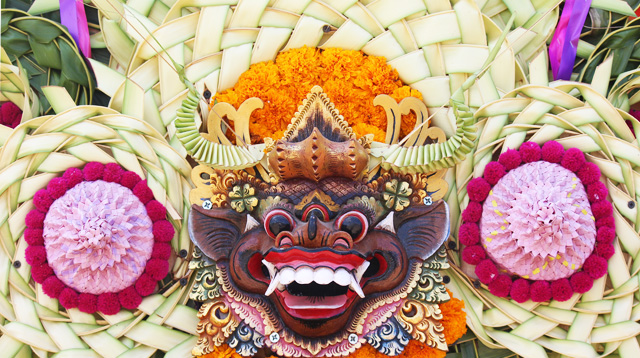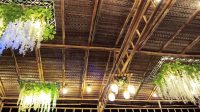TRADITIONAL Balinese ornaments are usually applied to sacred buildings, traditional home pavilion (bale) and the entrance to the house compound area. This variety of ornament has a philosophical meaning related to the beliefs owned by the Balinese Hindu community.
The use of the ornamental material is wisely adjusted to the location where it will be placed. For example, in stone building people will place a statue or carving made from solid stone. Similar way is also applied to materials made from sand stone, wood or concrete.
In terms of themes, there are ornaments that raise the figures of gods, guardian of mystical creatures, animals, plants and puppet characters. These ornaments depicting deities and mystical beings are commonly applied to sacred buildings like temples and family shrines. Meanwhile, for pillars, pedestals and other parts of traditional Balinese home pavilion people tend to use floral and faunal motif.
Well, aside from the Balinese traditional ornaments above, there are also contemporary ornaments that combine various art types and media. For example, the entrance gate to the house compound for Balinese traditional wedding ceremony makes use of a bamboo plengkung (arched frame) with simple ornaments made from young palm leaf festoons that are shredded and arranged in such a way to make it suspended.
Nowadays, a few creative artists design this entrance gate differently by combining various arts and different media. For example, such shredded young palm leaves are now replaced with woven young coconut leaves that are either still white or slightly green. This is then combined with wooden boma (symbolizing destroyer of all catastrophes) mask as well as the marigold arrangement and tray cover. Hence, it looks vivid and perfect.










